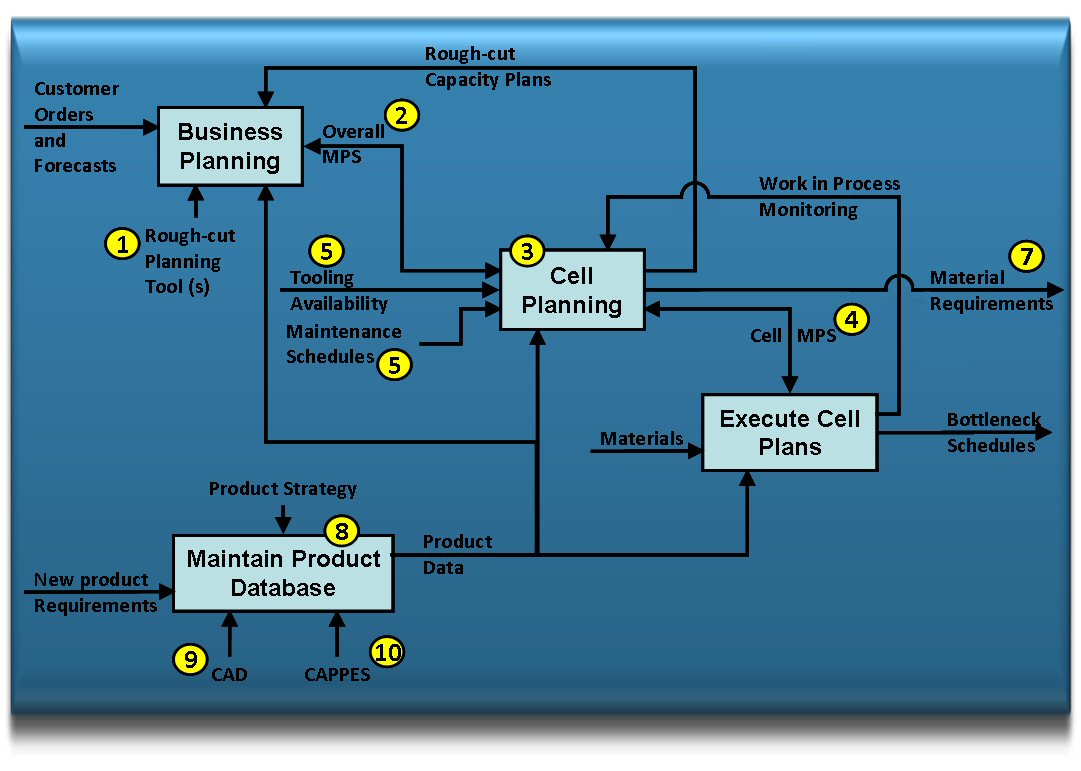7.17 - The Elements of CAM
The diagram below illustrates the basic form of an overall control system and the product business dataflow, together with the database aids to support the preparation of plans. The principles apply equally to MRPII and Kanban as well as to composites of both forms of control. However, the detail and the level of computer support for each of the elements will vary significantly between the two types of control and the degree to which control autonomy is distributed between the centre of a manufacturing buiness and the individual cells.
Overall Control System

Key Features
- A macroscopic whole cell rough-cut capacity planning aid calibrated in broad terms against product mix and facilities available (2) below.
- A tentative Master Production Schedule, defining what products will be made in a given time period.
- Cell management and cell teams take the tentative master production schedule and using an in-cell rough-cut capacity planning aid check the feasibility of the plan and ask “what if?” questions.
- After iterative reference back to business management and definition of bottleneck machines and bottleneck cells they agree a fixed cell plan for the next fixed short time period. In this process the bottlenecks get the most attention and are finite capacity planned and require less critical attention. The planning process spreads the workload between centralised and decentralised functions. It is a quick process because the single cell with one bottleneck machine is much easier to understand and plan than the complex overall manufacturing unit.
- In the process of evaluating cell plans the maintenance plan must be considered to validate machine and process availability.
- A jig and tool control system is required to schedule the availability of the tools and consumables supplies in tune with materials flow. It good to remember that some consumables can be added to the BOM to simplify scheduling. This practice also reminds designers of the full product manufacturing requirements and aid in DFA exercises.
- At the long term planning horizon look ahead to stage the overall MPS to produce a material procurement plan and this is checked in detail for availability of materials at the short term fixed stage(s).
- In the process of developing an acceptable plan, the business managers and cell managers consult the master product and manufacturing engineering database.
- Item (8) above is developed and kept up to date by product design, possibly via PLM links to Computer Aided Design (CAD). See guide 7.13.
- Item (8) above is also developed and kept up to date by industrial engineers using Computer Aided Process Planning and Estimating Systems (CAPPES) or Product Cost Management (PCM) systems. See guides 7.15 and 8.05.